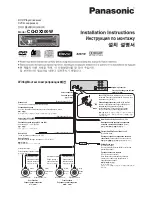
Receiver Mode
R&S
®
ESR
146
User Manual 1175.7068.02 ─ 12
Nevertheless, this time is still very long, often in the order of hours, especially for the
CISPR radiated emissions tests. A way out of this situation can be time-domain mea-
surements, see
Chapter 5.1.3.2, "Time Domain Scans in the Frequency Domain"
5.1.3.2
Time Domain Scans in the Frequency Domain
Time Domain scan are available with firmware application R&S
ESR-K53 and hard-
ware option R&S
ESR-B50. Measurement results fully comply with CISPR 16-1-1
standards.
Time domain scan reduce the overall measurement time enormously. For applications
like voltage tests, no preliminary measurement for data reduction is required, because
the final measurement with the quasipeak detector is already fast enough. For more
time consuming tests like field strength test with mast and turn table, prescans are still
recommended. However, due to the increased measurement speed both in prescan
and final scan, the overall measurement still is considerably reduced.
Whereas in conventional EMI measurement systems, only the spectrum within the
measurement bandwidth can be measured during a certain measurement time of e.g.
100 ms, in this measurement systems, large parts of the spectrum at the receiver input
can be measured in parallel using fast fourier transform (FFT) of frequency sections.
For measurements with prescan, the prescan is used to get a detailed overview of the
emission spectrum. The prescan result is then analyzed and the critical frequencies
can be determined. On the critical frequencies, if further maximization with antenna
mast and turntable movement is needed, the R&S
ESR can be used in its conventional
measurement function with quasipeak and/or average detection.
5.1.3.3
The Scan Table
Either the current receiver settings or the settings defined in the Scan table are used
for stepped or time domain scans.
In the scan table, up to 10 subranges can be defined within one scan. They need not
be next to each other. The subranges are then scanned by R&S
ESR one after the
other. Measurement ranges should not overlap. The parameters to be measured in
each subrange can be selected independently. For more information on the available
range parameters see
Measurements and Result Displays
















































